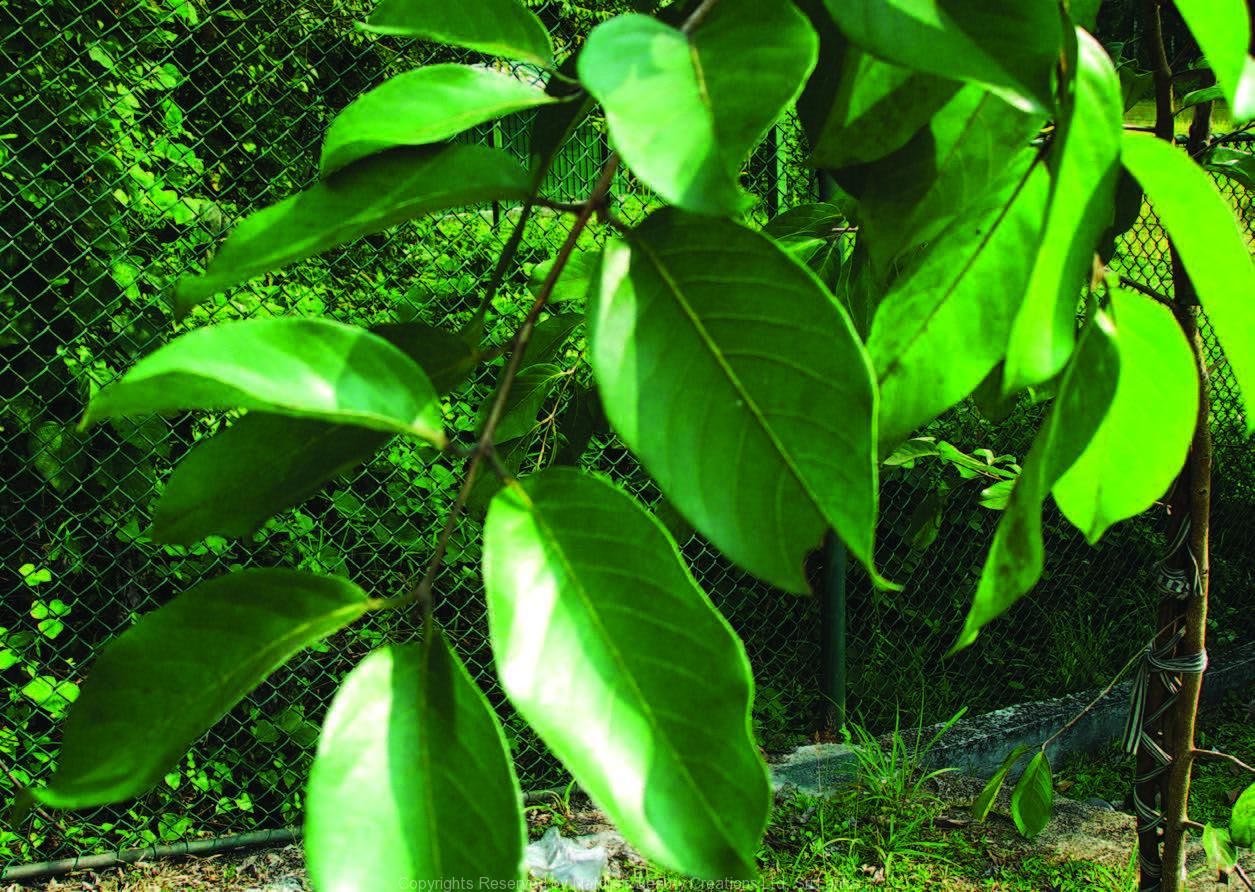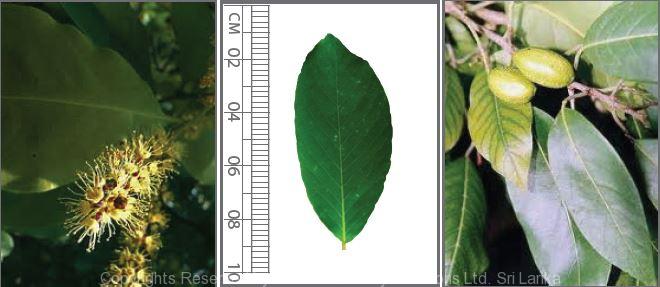

Traditional Knowledge
Useful plant parts :
Fruit
Uses in traditional medicine :
- Infusion of powdered dried young fruit is used as a mouthwash for bleeding gums
Scientific Research
Chemical constituents:
Phenolic compounds: ellagic acid, gallic acid, galloyl glucoses, chebulic acid and its minor isomer: neochebulic acid, tannins: chebulinic acid, chebulagic acid from fruits; triterpene glycosides: chebuloside I and II from stem bark
Bioactivity :
Alcohol and aqueous extracts of fruit: hepatoprotective, radioprotective, antibacterial, antidiabetic, decrease cell viability, cell proliferation and induce cell death of several cancer cells; gallic acid and galloyl glucoses: inhibit HIV-1; tanin extract of immature fruit: wound healing; chebulinic acid: gastroprotective, hypoglycaemic; water extracted carbohydrate polymer from plant: antitussive
Clinical:
An ingredient of the drug ‘Triphala’ and the tablet ‘Pilex’; An ingredient of the drug ‘Geriforte’ which is used for arresting rapid onset of mental and physical disability in aged persons; Aqueous extract of ripe fruits inhibits glycolysis of salivary bacteria, effective mouth wash formulated using ethanol extract of plant
References : Ahn, M. J. et al., (2002), Inhibition of HIV-1 integrase by galloyl glucoses from Terminalia chebula and flavanol glycosude gallates from Euphorbia pekinensis, Planta med, 68, 457-459. Bag, A. et al., (2013), The development of Terminalia chebula Retz. (Combretaceae) in clinical research, Asian Pac J Trop Biomed, 3(3), 244-52. Gandhi, N. M. and Nair, C. K. K., (2005), Radiation protection by Terminalia chebula: Some mechanistic aspects, Molecular and Cellular Biochemistry, 277(1-2), 43-48. Huang, Y. N. et al., (2012), Anti-Hyperglycemic Effect of Chebulagic Acid from the Fruits of Terminalia chebula Retz, Int J Mol Sci, 13(5), 6320-33. Jagtap, A. G. and Karkera, S. G., (1999), Potential of the aqueous extract of Terminalia chebula as an anticaries agent, Journal of Ethnopharmacol- ogy, 68(1-3), 299–306. Kumar, G. P. S. et al., (2006), Anti-Diabetic Activity of Fruits of Terminalia chebula on Streptozotocin Induced Diabetic Rats, Journal of Health Science, 52(3), 283-291. Kundu, A. P. and Mahato, S. B., (1993), Triterpenoids and their glycosides from Terminalia chebula, The International Journal of Plant Biochemistry, 32(4), 999–1002. Lee. H. S. et al., (2007), Isolation of chebulic acid from Terminalia chebula Retz. and its antioxidant effect in isolated rat hepatocytes, Archives of Toxicology, 81(3), 211-218. Li, K. et al., (2011), Tannin extracts from immature fruits of Terminalia chebula Fructus Retz. promote cutaneous wound healing in rats, BMC Complement Altern Med, 11(86). Malekzadeh, F. et al., (1999), Antibacterial activity of black myrobalan (Terminalia chebula Retz) against Helicobacter pylori, Journal of Ethnopharmacology, 68(1-3), 299–306. Mishra, V. et al., (2013), Anti-secretory and cyto-protective effects of chebulinic acid isolated from the fruits of Terminalia chebula on gastric ulcers, Phytomedicine, 20(6), 506-11. Nayak, S. S. et al., (2012), Effectiveness of mouthrinse formulated from ethanol extract of Terminalia chebula fruit on salivary Streptococcus mutans among 12 to 15 year old school children of Belgaum city: a randomized field trial, J Indian Soc Pedod Prev Dent, 30(3), 231-6. Nosalova, G. et al., (2013), Antitussive Activity of the Water-Extracted Carbohydrate Polymer from Terminalia chebula on Citric Acid-Induced Cough, Evid Based Complement Alternat Med. Saleem, A. et al., (2002), Inhibition of cancer cell growth by crude extract and the phenolics of Terminalia chebula retz. Fruit, Journal of Ethnopharmacology, 81(3), 327–336. Singh, R. H. and Sinha, B. N., (1978), Clinical and Psychobiological Studies on the Effect of an Indigenous Compound Rasayana Drug in Apparently Normal Aged Persons, Journal of Research in Indian Medicine, Yoga and Homoeopathy, 13(1), 8. Tasduq, S. A. et al., (2006), Terminalia chebula (fruit) prevents liver toxicity caused by sub-chronic administration of rifampicin, isoniazid and pyrazinamide in combination, Human and Experimental Toxicology, 25(3), 111-118.
Copyrights Reserved By
Natures Beauty Creations




